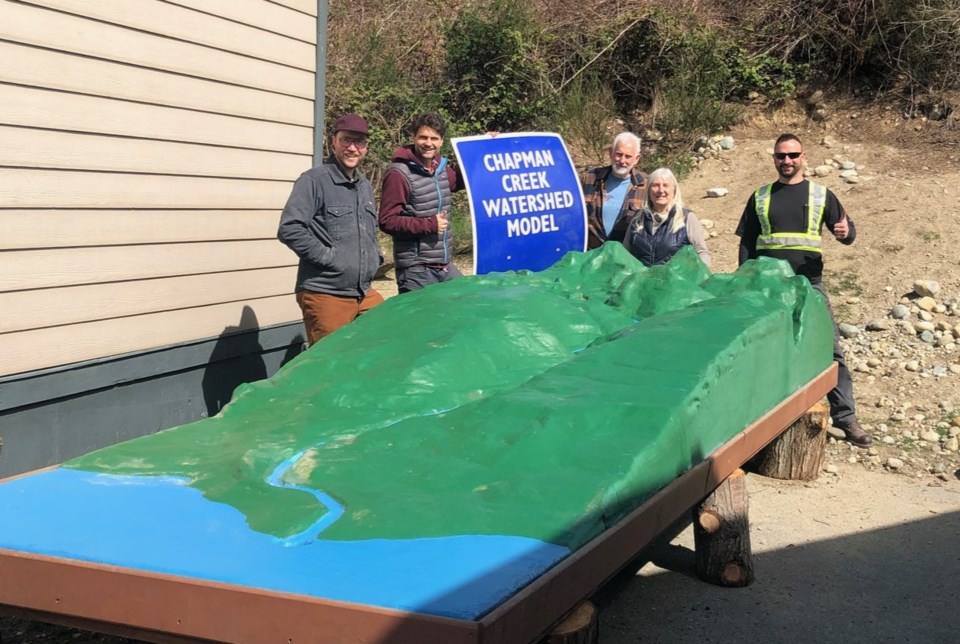From headwaters to estuary, the entire Chapman Watershed is physically represented in a scale model that, as of April 17, has been moved to a new location more than 20 years after it was built.
It took Dianne and Dave Sanford a year to build the model out of layers of foam and a lacquer of fibreglass in 2002. They carefully carved and sanded each contour before finishing it with the help of an auto body shop. At a scale of one to 20,000, the tabletop is six feet wide by 18 feet long.
Since its debut, the table has lived at Chapman Hatchery near the very terminus of the watershed the model represents. The Sunshine Coast Salmon Enhancement Society has used it to teach hundreds of children about where their water comes from, how it gets to Chapman Lake and where it goes from there (and, of course, about the life cycle of salmon and conservation). Complete with a water feature, the model literally follows the flow from “rain” down to the ocean.
“It was a really nice complement” to the program that raised salmon in the classroom, Sanford said. “Talking about human-salmon competition, interaction, all of those things.”
But in 2019, around the time Sanford retired from her contract with Fisheries and Oceans Canada (DFO), the model fell out of use. Now, as the hatchery makes more room for its youth camps, they approached Sanford about what to do with the model.
First, Sanford approached the Sunshine Coast Regional District — after all, the Chapman watershed falls under its jurisdiction — but they didn’t have room. When she reached out to the school district, Sanford found a home for the table at Davis Bay Elementary’s NEST program. The new site is “a natural progression,” Sanford said, as the school was also part of the salmon in the classroom program.
On Monday, April 15, teachers joined the group effort to lift the model onto the truck bed (the use of which was donated by RentalEquip) and then unload it at the school. Fortunately, the table is lighter than it looks.
Simon Hocking, a Grade 6/7 teacher at Davis Bay Elementary who helped coordinate the donation, said the teachers are already talking about how to use the model. His students have hiked from Chapman Creek to the bridge and up to Mt. Steele. Hocking and the other teachers plan to have the students build miniature models of the bridge and the Tetrahedron Provincial Park cabins to add onto the watershed model. Since the students are familiar with those features, Hocking hopes they will help give the kids a new appreciation for the area.
Dianne, Hocking said, “put so much time and love into it. She worked hard to make sure it wasn’t just thrown away.
“I’m a real visual learner,” Hocking said. “For visual, tactile learners to actually see a three dimensional model of the watershed is really unique and different than looking at a map or learning about it in a textbook. For us, learning from the land and learning about our local area is a really important part of what we do.”
Sanford said she is “just ecstatic” about the watershed model being used as an educational tool again. She plans to give the teachers her lesson plans.
“It’s definitely a rebirth,” she said.



